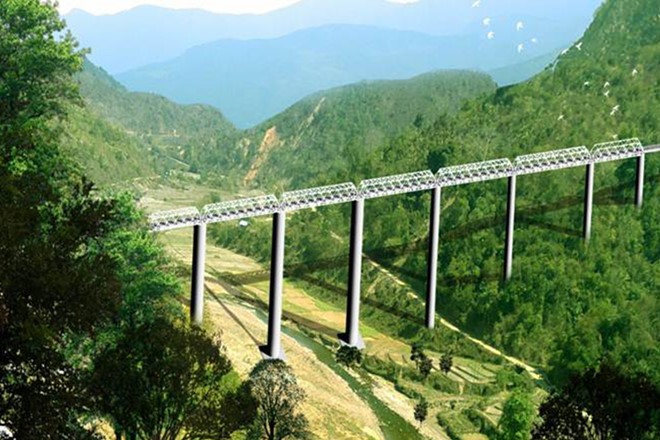Investment in infrastructure is of utmost importance for the economic growth of a nation. Physical Infrastructure such as ports, roads, highways, railways, and airports play important roles in the transportation of goods to other states and countries. Moreover, good and well-connected physical infrastructures are also needed for manufacturers to get raw materials and other components. The level of economic progress in any country directly depends on the development of both physical and institutional infrastructures.
In the last 4.6 years, India has seen a record development in the infrastructure sector. The country has witnessed many infrastructure initiatives for bettering land, air, and water connectivity. Now, in a rare feat, the Northeast Frontier Railway (NFR) has constructed a 100 metres tall pier in the world’s tallest railway bridge being built near Noney in Manipur. The times of India has quoted senior PRO SK Ojha saying, “We have achieved a major advancement in constructing the world’s tallest bridge near Noney. We have successfully crossed the 100 metre mark, making it India’s tallest pier. The bridge is being constructed across the valley of river Ijai near Noney with the final pier height of 141 metre. On completion, it will surpass the existing record of 139 metre of Mala-Rijeka viaduct in Montenegro in Europe.”
The total length of the bridge which is also a national project will be 703 metres. The project has gained momentum in the last three years mainly because of its importance as the national project. The bridge is a part of the 111-km Jiribam-Tupul-Imphal new broad gauge line project. In total, there are 45 tunnels in the project, the longest tunnel being 10.280 km long. It is set to be the longest railway tunnel in the northeast.
According to Northeast India24 report, the piers of the bridge are constructed by using hydraulic augers, the tall piers needed specially designed “slip-form technique” to ensure efficient and continual construction. It further adds that “Self-erecting” electric lifts at each pier cater to the safe and speedy conveyance of men and materials to the top. The steel girders are pre-fabricated in a workshop, transported in segments and erected at the site by Cantilever launching scheme.
The capital city of Manipur, Imphal has had no railway connectivity. The 111-km Jiribam-Tupul-Imphal line will connect Manipur’s state capital Imphal to Jiribam which is on the western-most tip of the northeastern state. Jiribam is an area that adjoins the Cachar district of Assam.
The connectivity in the Northeast region has been so poor that capitals of Mizoram, Meghalaya, Manipur, Sikkim, and Nagaland still do not have railway connectivity. The development of infrastructure in the northeast is very important for the security purpose as well as the development of the local population. The incumbent government has laid huge efforts to develop the infrastructure in the region. Last week, in a milestone event, the 1st freight train ran on Bogibeel Bridge, India’s longest road-cum-rail bridge with a phenomenal stretch of 4.94 kilometres, connecting Assam with Arunachal Pradesh.
Historic Day for Railways: In a milestone event, the 1st freight train ran on Bogibeel Bridge, India's longest road-cum-rail bridge with a phenomenal stretch of 4.94 kilometres, connecting Assam with Arunachal Pradesh & opening the doors to enhanced connectivity in the North-East pic.twitter.com/bH97RODDSf
— Piyush Goyal (मोदी का परिवार) (@PiyushGoyal) December 2, 2018
For more details: First-ever freight train on rail-cum-road Bogibeel Bridge
Connectivity is essential for the economic growth of any country and the push for infrastructure development by the government is expected to help the country in achieving its target of double-digit economic growth.
